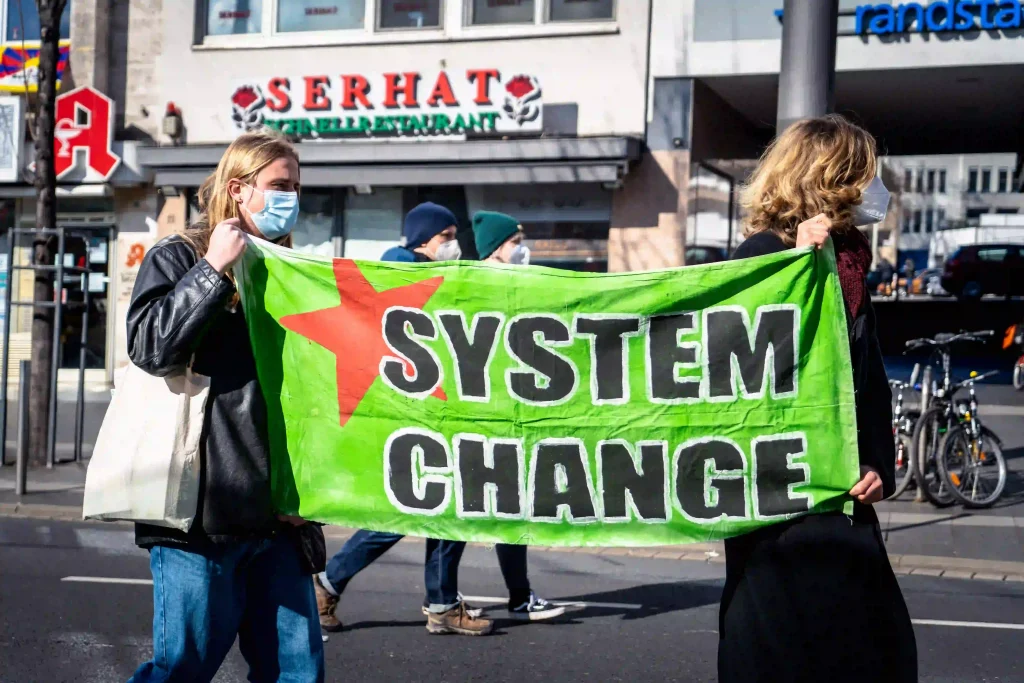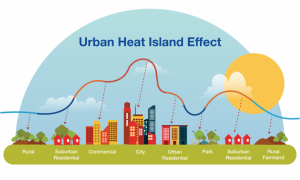
How Varsya Is Redefining Sustainable Food Packaging in India
All articles How Varsya Is Redefining Sustainable Food Packaging in India By Ketul Updated 14 Oct, 2025 10 min read Contents Main Menu A planet
Environmental Hope is a tricky thing to muster, but at the same time ‘hope’ is crucial for engaging young people in environmental issues. They are the future after all!
Climate Optimism is having hope for the environment despite the relentlessly grim news that surrounds us. I’m sure it seems ignorant to think about being optimistic about this issue – particularly with the increasingly dire impacts of this crisis – but I am.
After a very intense debate with some of my classmates, I came to the conclusion that our ‘rational thinking’ is based on pessimism. We think and work according to ‘What if it doesn’t work?’ but seldom according to ‘What if it does?’. The aforementioned debate was on ‘Do you believe in sustainable development?’, and I am disheartened to say I was overpowered by the majority who did not believe in it. Their belief was based on the idea that “We’ve crossed the threshold already, why bother?”
I understand that when scientists from all over the world warn that society will either transform itself or be transformed as a result of climate change, it’s easy to fear the unknown! But, in the words of Katharine Hayhoe, a climate scientist at Texas Tech University, “Fear is useful to wake us up and make us pay attention” This does not mean we give up trying altogether!
Tension and conflict are the start of any good story. By that standard, we have a fantastic tale in the works that is filled to the brim with suspense and happy endings. The final outcome is up to us. How will the human story’s ongoing chapter be concluded?
Hence, in the spectrum of climate change, there are many reasons to still be hopeful.


As public awareness of climate change rises and stabilises, supported by active movement around the world, there have been significant changes in governmental and corporate willingness to address the issue. In order to achieve net-zero energy use by 2050, hundreds of billions of dollars are being invested in clean energy projects and technologies.
Many people are unaware that numerous wealthy nations have experienced decreases in greenhouse gas emissions in recent years, even if worldwide emissions have stayed resolutely unbent. For instance, over the past 15 years, greenhouse gas emissions in the United States have dropped by around 20 per cent. Furthermore, the EU reduced emissions by 34% when compared to 1990 levels, exceeding its 2020 target.

Even though this is insufficient to put the US or the EU on the correct path in terms of combating climate change, it is important to note that previously it was impossible to reduce emissions without compromising economic growth. But now, many wealthy countries have done so at no cost to future economic prospects.
Denmark is one of the leading examples. For the past three decades, Denmark has been at the forefront of the transition to carbon neutrality. Since 2005, the country has reduced Green House Gases (GHG) emissions by 23 per cent, outperforming the EU’s 16.2 per cent drop. In fact, in Environmental Performance Index 2022, Denmark topped the rankings among 180 countries! You can read more about Denmark’s Environmental Performance here.
“When it comes to climate change, the mountain in front of us remains quite tall indeed, but thinking it unscalable does about as much good for getting us to the top as pretending it’s not there.”
(“Why There’s Reason to Be Optimistic About Climate Change,” Forbes 2022) Tweet
Research on the association between social media use and its relevance to opinions, knowledge, and behaviour related to climate change reveals various beneficial effects. Social media promotes increased awareness of climate change, the mobilisation of climate change activists, and a forum for dialogue about the subject with others. Additionally, Gen-Z is making good use of social media’s growing influence. Read more about some inspiring examples of youth embracing climate optimism here.
These climate impacts are simply one side of the story; the other is how humans react, change, and advance along the way.
Get on step closer to making eco-friendly choices
It’s hard to avoid the everlasting climate news that rarely shows our wins. At times like this, it becomes hard to avoid eco-anxiety. Climate change’s physical effects are constantly being broadcast on social media.
But, by detoxing our social media, we can all discover positive news and motivate change by putting more emphasis on community.
According to psychologists, our collective fear of doom has a name: eco-anxiety. This title implies that our collective emotional reactions to the overwhelming sense of hopelessness surrounding climate change are appropriate reactions to devastation.
We open our Instagrams and find a forest on fire or find reports on record-setting temperatures due to climate change. Although these are important pieces of information but when such news becomes overwhelming, we NEED to focus on the good.
At times like this, we must focus on the amazing accounts that teach us upcycling or look for those friendly faces that teach us how to reduce our plastic waste.
Change can begin with only one person, one idea, or one action. By pushing ourselves and stepping beyond our comfort zones, we can all create positive change. Find a sustainable goal you are passionate about and just start working. You can form a community of like-minded individuals and work towards your goal, just like the creators of Mission Sustainability. Change happens one step at a time.
There is a widespread sense of despair and defeatism due to the notion that there has been no advancement at all in combating climate change. Although no sudden miracles have taken place, we have already made progress (Although there is still a long way to go). The issue is that the remedies aren’t being implemented quickly enough. Along with resistance from certain sectors of the economy, people’s aversion to change has contributed to the status quo.
To achieve our bare-minimum climate action goals, the world will need to adjust how it produces and consumes energy, transports, builds structures, and grows food to slow climate change and prepare for the damage that has already begun. Starting with accepting innovation and change will help.

All articles How Varsya Is Redefining Sustainable Food Packaging in India By Ketul Updated 14 Oct, 2025 10 min read Contents Main Menu A planet

All articles Business Statistics: Importance, Applications, and Types By Ketul Updated 06 May, 2025 10 min read Contents Main Menu A Brief History of Business

All articles Can Afforestation Make Cities Cooler? The Urban Heat Island Effect Explained By Ketul Updated 07 March, 2025 10 min read Contents Main Menu